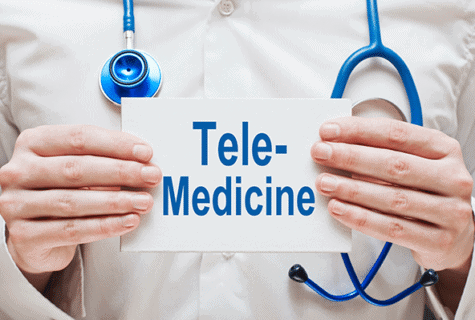
If you’ve opened your CPT® 2017 manual, you’ve noticed there’s a new symbol in front of some of the codes — a star. But what does this mean, and how does it affect your coding and reimbursement? The big news is that Medicare is paying for more of these services in 2017 — if you follow the rules.
CPT is using the star to indicate telemedicine codes (and you can find a full list of these codes in Appendix P of your manual). In addition to normal use, you can also submit these codes for synchronous telemedicine services when you add modifier 95 (Synchronous telemedicine service rendered via a real-time interactive audio and video telecommunications system).
To report a code as a telehealth service, however, CPT states that you must exchange sufficient information with the patient during the telemedicine encounter to meet the key components and/or requirements of the service as if you had rendered it face-to-face. And you can add modifier 95 only to those codes with a star.
In addition, Medicare has weighed in on telehealth services in the recently released Physician Fee Schedule final rule. In fact, Medicare will pay for a telemedicine service only if it meets certain rules:
- The service must be on the list of approved telehealth services. You can find the complete list at https://www.cms.gov/Medicare/Medicare-General-Information/Telehealth/Telehealth-Codes.html.
- It must be delivered using an interactive telecommunications system. The Centers for Medicare and Medicaid Services (CMS) defines this as, at a minimum, audio and video equipment that permits two-way, real-time interactive communication between you and the patient.
- The service must be provided by a physician or other authorized practitioner.
- You must render the service to an “eligible telehealth individual,” which CMS defines as a patient enrolled in Part B who receives a telehealth service at a telehealth originating site.
- And the patient must be located in a “telehealth originating site.” Originating sites, according to the agency, are those located in rural health professional shortage areas (HPSAs) or in a county that isn’t included in a metropolitan statistical area (MSA).
Medicare then splits the payment for the service between you as the provider and the originating site. The site receives the facility portion of the payment, and you receive the professional fee as the rendering provider.
To reflect this distinction between to the two care sites, the originating site will use its regular place of service (POS) code on the claim — for example, 23 for an emergency department or 20 for an urgent care facility — and the rendering clinician will use POS code 02 for the telehealth service.
Finally, CMS has added a few codes to its list of approved telehealth services for 2017, which means it will pay for them if you document and report them appropriately, including the following:
- End-stage renal disease (ESRD) related services 90967-90970
- Advance care planning 99497-99498
- Critical care consultation furnished via telehealth G0508-G0509
Example: A patient reports to a clinic in an HPSA complaining of an intense headache, nausea, and sensitivity to light and noise. The physician on duty assesses the patient for a migraine, but is unsure regarding an appropriate treatment, so she initiates a telehealth session with an emergency department specialist in a hospital on the other side of the state. Using an interactive telecommunication system, the specialist assesses the patient — performing a detailed history, detailed examination and low complexity medical-decision-making — and diagnoses him with a cluster migraine, prescribing medication and informing the originating site regarding needed treatments. In this case, the specialist will report code 99203-95 with POS 02.
Take Aways:
- The CPT manual designates codes that can be furnished through telehealth with a star and lists them in Appendix P.
- You should use POS 02 on your claim if you’re the rendering physician of a telehealth service.
- CMS added multiple services to its list of payable codes for telemedicine in 2017.
